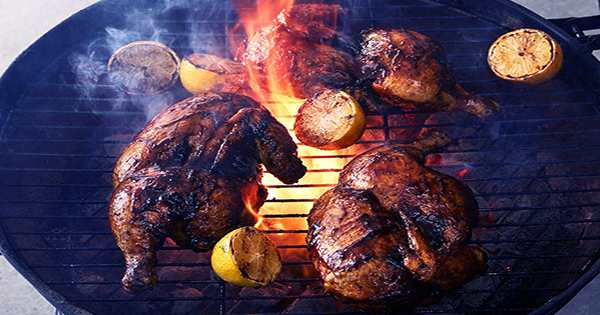Physics says it’s possible; people are trying to slap chickens after learning it. Shortly before Reddit, someone asked a question in a subtitle of no-nonsense questions: “If kinetic energy is converted to heat energy, how many slaps do I have to make to cook chicken?”
While this is obviously a basic question, it is also one of the best questions I’ve ever heard on the Internet. Parker Ormonde, a physicist on Facebook, did the math, “As the head of physics in your friendly environment, I decided to calculate it with a few assumptions. The formula for converting kinetic energy and thermal energy into 1 / 2mv2 = MCT,” he wrote on Facebook.
“The average human hand weighs about 4 kg, the average slapping speed is 11 m / s (25mph), the average rotisserie chicken weighs 1 kg (2lbs) and its specific heat capacity is 2720 J / kg * C, and Let’s consider it cooked. We need the chicken to reach 205C (400F). The chicken will start frozen at 0C (32F). He finally came to the conclusion that “to cook a chicken in one ride you have to slap it at a speed of 1665.65 meters / 3725.95 miles per hour.”
Now, it has been asked quite a big question that the Earth spins about 1,600 kilometers (1000 miles per hour) per hour, making it incapable of slapping on the way to Roast. There are other problems with a punch chicken as well because of this simulation of the 3D render artist on the Twitter show.
If you slap the chicken hard for cooking, it will spray all over the walls and you will be quite handy in the process and cook your hands. This can lead to broken bones in your hands and all the bleeding combined, perhaps distracting you a bit from serving and/or chewing potatoes. With people reluctant to sacrifice an organ for lunch, the question became whether it would be possible to lightly spam the chicken a few thousand times and cook it that way instead.
Since the translational kinetic energy of a body is equal to the square source of its mass and its velocity, it is not as easy as slapping your chicken 3726 times in just 1 mph and making gravy. You also have the problem that the chicken is getting cold in the slap, which means your injuries have to be repeated very quickly.
In the case of ordinary slaps, assuming you can deliver them at incredible superhuman speeds; it would take a lot more hell. “Called Ormond,” 1 average slaughter will increase the temperature by 0.0089 degrees Celsius. It would take an average of 23,034 slaps to cook a chicken. “The oven needs zero right there when it is an unreasonable number. Yet, people have tried, both using equipment and through other fraudulent methods.
As you can see from the video, the slaughter (according to the laws of the universe) heated the chicken. The chicken slapping logistics, however, means that it breaks down long before it is cooked. As the host puts it in the video, “there’s only a gram vacuum where there were chickens.” The idea of cooking chicken without the hassle of the extreme convenience of providing a stove was long before the internet. In a further scientific study in 1987 (although this was clearly done primarily for fun), physicists at the University of Ohio investigated the cooking of chicken with potential energy.
“When an object is lowered from a height, its potential energy is converted into kinetic energy. When the ground is affected, this kinetic energy is converted into heat,” they wrote in their paper. “If the height change can be made large enough, significant amounts of heat can be generated, everyday tasks like cooking can be made safer, easier and energy-efficient.”
Naturally, they took 11.3 kilograms (25 pounds) of Greaseball brand turkey, took it to the tenth floor of the administration building, and jumped the bird from one side before measuring the temperature of the meat. “This process was repeated 72 times in six hours with the same turkey.” The test was stopped when they ran from the banana to give their helper, but they said from their measurements that it would reach 400 degrees Fahrenheit (204 degrees Celsius) in just 46 hours using the method, and they tasted the meat after tasting it.















